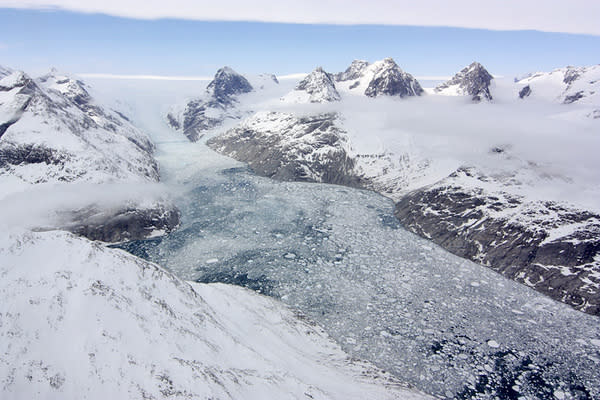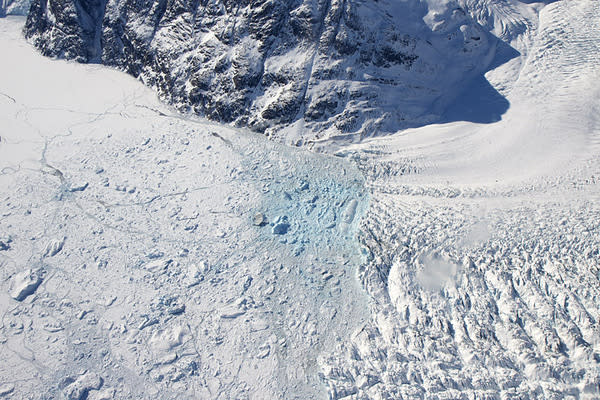Stunning Ice Views Captured by Airborne NASA Mission
Arctic ice is undergoing rapid changes, and for the fourth year running, NASA scientists are flying missions above the region's forbidding landscapes to monitor the changes taking place there.
It's in the Arctic that scientists have seen some of the most dramatic effects of global warming, yet understanding and predicting those effects and the way they in turn influence global climate presents an enormous challenge.
Some glaciers are speeding up, dumping more water from Greenland's massive ice sheet into the ocean — which raises global sea levels — while other glaciers have barely budged. And it now appears that changes in Arctic sea iceaffect everything from weather in Europe to the amount of sunlight the Earth absorbs.
"The once seemingly insignificant and remote Arctic region is now understood to be intimately connected to the rest of the planet," noted Goddard Space Flight Center's Nathan Kurtz in a post from the field in late March.
The NASA project, known as IceBridge, is tracking changes to Arctic ice year to year, thanks to airplanes packed with instruments. The six-year mission is filling in the gap between the retirement and launch of two ice-monitoring satellites.
In addition to capturing invaluable data, researchers have captured some stunning views that humans rarely see.
The top image, snapped during an April 25 IceBridge flight, shows a glacier in eastern Greenland flowing through a fjord. Where the glacier meets the sea, there's a layer of floating ice chunks that have broken off from the glacier.
According to a NASA statement, there's evidence that these crowds of icebergs, known as ice mélanges, help slow a glacier's progress, yet scientists need more data to understand the processes at work.
The second image shows a different ice mélange up close. The blue patch in the middle may be evidence of disturbance in the ice — a chunk that recently broke away from a glacier, seen on the right side of the frame.
Thinner, more transparent ice often has a blue tinge, as does ice that comes from the bottom of a glacier.
Follow OurAmazingPlanet for the latest in Earth science and exploration news on Twitter @OAPlanet and on Facebook.
Copyright 2012 OurAmazingPlanet, a TechMediaNetwork company. All rights reserved. This material may not be published, broadcast, rewritten or redistributed.




